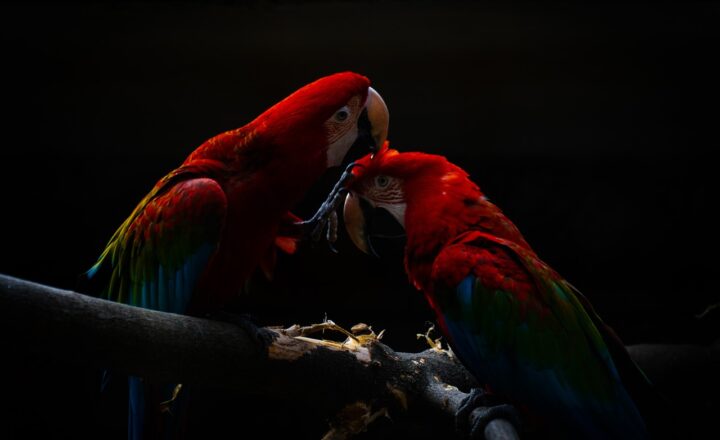Why Parrots Live So Long: Understanding the Lifespan and Care Needs of Parrot Species
November 13, 2024

Parrots are enchanting creatures known for their vibrant colors, playful personalities, and the remarkable ability to mimic human speech. But one of the striking aspects of these avian companions is their impressive lifespan, which can often exceed that of traditional pets like dogs and cats. This article will explore why parrots live so long, examine the various species, and delve into their care needs to ensure longevity and well-being.
1. The Lifespan of Parrots: A General Overview
The lifespan of parrots varies significantly among species, but many common pet parrots can live for decades:
- Budgerigar (Budgie): 5 to 10 years in captivity, but some can live up to 15 years with great care.
- Cockatiel: Generally 10 to 14 years; some can reach 20 years with the right care.
- Amazon Parrot: Typically 25 to 30 years, with documented cases living up to 50 years.
- African Grey Parrot: Known for their intelligence, they can live 40 to 60 years, with some reaching 80 years.
- Macaws: These captivating birds can live 30 to 50 years, with some species reported to live up to 80 years in captivity.
What factors contribute to these remarkable lifespans? Let’s explore further.
2. Factors Contributing to Longevity in Parrots
Understanding why parrots can live for such long periods requires a holistic look at both natural and environmental factors that influence their lifespan:
2.1 Genetic Factors
Just like any other species, the genetic makeup of parrots plays a crucial role in determining longevity. Certain species have evolutionary traits that inherently promote resilience to disease and support longer lifespans.
2.2 Diet and Nutrition
A balanced and nutritious diet significantly impacts a parrot’s health and longevity. Parrots are primarily herbivores and thrive on a diet of seeds, fruits, vegetables, and nuts. Owners should avoid feeding them processed or unhealthy foods, which can lead to obesity and related health issues.
2.3 Environmental Enrichment
Parrots are highly intelligent and social creatures that thrive mentally and physically when provided with an enriching environment. They need space to fly, play, and explore. Roughly 3-4 hours of free flight daily or equipment like play gyms can greatly enhance their quality of life.
2.4 Healthcare and Regular Vet Visits
Regular veterinary care is essential in diagnosing and preventing potential health problems. Routine check-ups ensure that any illnesses can be caught early, contributing significantly to a longer, healthier life.
2.5 Social Interaction
Parrots are flock animals by nature and thrive on social interaction. Loneliness can lead to depression and health problems. Engaging with your parrot on a daily basis—whether through direct interaction, toys, or other pets—fosters mental stimulation and companionship.
3. Understanding the Needs of Various Parrot Species
Not all parrots share the same care requirements. Understanding the specific needs of different species is vital for their health and longevity:
3.1 Amazon Parrots
Amazon parrots are social and often require more interaction than smaller species. They thrive on fruits and vegetables, and their lifespan can be heavily influenced by mental stimulation through toys and playtime.
3.2 African Grey Parrots
Known for their intelligence, African Greys require enriching activities and a varied diet for optimal health. They need toys that challenge their problem-solving skills and frequent social interaction to prevent boredom and stress.
3.3 Macaws
Macaws are large parrots that demand more space and attention. Their diet should involve high-fiber foods as well as plenty of vegetables. Due to their strength, proper care for their beaks and nails is crucial as well.
3.4 Budgerigars and Cockatiels
Smaller parrots like budgies and cockatiels require less space but still need social interaction and entertainment. They adapt well to companionship and can thrive in environments with gentle play and flight opportunities.
4. Common Health Issues and Preventative Care
Just like any pet, parrots are susceptible to various health issues that can affect their lifespan:
4.1 Obesity
One of the most common health threats, particularly in captive birds, is obesity. An unhealthy diet can lead to serious conditions such as heart disease and diabetes. Owners should prioritize a balanced diet and monitor their parrot’s weight regularly.
4.2 Feather Plucking
Behavioral issues like feather plucking can signal stress or boredom. Providing adequate mental stimulation and attention, along with toys and interaction, can alleviate this issue.
4.3 Respiratory Issues
Parrots are vulnerable to respiratory conditions due to environmental factors. Proper ventilation and avoiding exposure to toxic substances, like smoke and aerosol sprays, can prevent respiratory diseases.
4.4 Psittacosis
This bacterial infection can affect both parrots and humans. Regular veterinary check-ups and proper hygiene in the habitat can reduce the risks of infection.
5. Conclusion: Committing to Care for Long-Living Companions
Owning a parrot is a long-term commitment that extends for decades. Beyond their captivating beauty and intelligence, these extraordinary birds require dedicated care and attention to thrive. By understanding their diet, social needs, and providing regular vet visits, parrot owners can significantly influence their feathered friends’ lifespans.
Ultimately, a commitment to nurturing a parrot’s psychological and physical needs will not only result in a long lifespan but also in a rich, rewarding relationship between humans and these remarkable avian companions.
If you’re considering bringing a parrot into your life or already have one, prioritize their care and engage with them daily. The joy they bring, along with the sounds and colors they add to your life, will make the journey truly exceptional.







